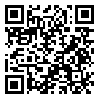BibTeX | RIS | EndNote | Medlars | ProCite | Reference Manager | RefWorks
Send citation to:
URL: http://hayat.tums.ac.ir/article-1-30-en.html
2- Iranian Research Center on SDH, University of Social Welfare and Rehabilitation Sciences, Tehran, Iran
3- Dept. of Nursing Education, University of Social Welfare and Rehabilitation Sciences, Tehran, Iran
4- Dept. of Phisiotherapy Education, University of Social Welfare and Rehabilitation Sciences, Tehran, Iran
5- Neurologist, Tehran, Iran
Background & Aim: Shoulder pain is a consequence of hemiplegia among patients with stroke. It makes patient to be dependent to others in their daily living activities. This study aimed to determine the effect of the slow stroke back massage (SSBM) on shoulder pain and hand function among patients with stroke.
Methods & Materials: In this semi-experimental study, 34 patients were recruited among from 70 patients who reffered to rehabilitation center in 2010, according to the inclusion criteria. Participants were randomly allocated into two groups of control and experiment. In the intervention group, the SSBM was implemented for 10 minutes through seven consecutive sessions. Shoulder pain and hand function were measured using the visual pain scale (Visual Analog Scale), and the researcher-made "affected hand function in ADL" instrument, respectively. The measurement was done before and 24 hours after the last session of the intervention. Data were analyzed using descriptive and inferential statistical tests (independent t-test and paired t-test).
Results: At baseline, the mean scores of shoulder pain were 8.4 in both experimental and control groups (P=0.999). After the intervention, the mean scores of shoulder pain were 1.13 and 8.40 in experimental and control groups, respectively (P<0.001). At baseline, the mean scores of hand function were 7.46 and 8.93 in the experimental and control groups, respectively (P=0.752). After the intervention, the mean scores of hand function reached 9.13 and 8.6 in the experimental and control groups, respectively (P=0.918).
Conclusion: According to the results of the study, applying the SSBM as a treatment procedure and care plan by health care providers can be considered as an effective intervention to prevent or reduce shoulder pain and consequently to improve motor function of affected hand in patients with hemiplegia after stroke.
| Rights and permissions | |
 |
This work is licensed under a Creative Commons Attribution-NonCommercial 4.0 International License. |





